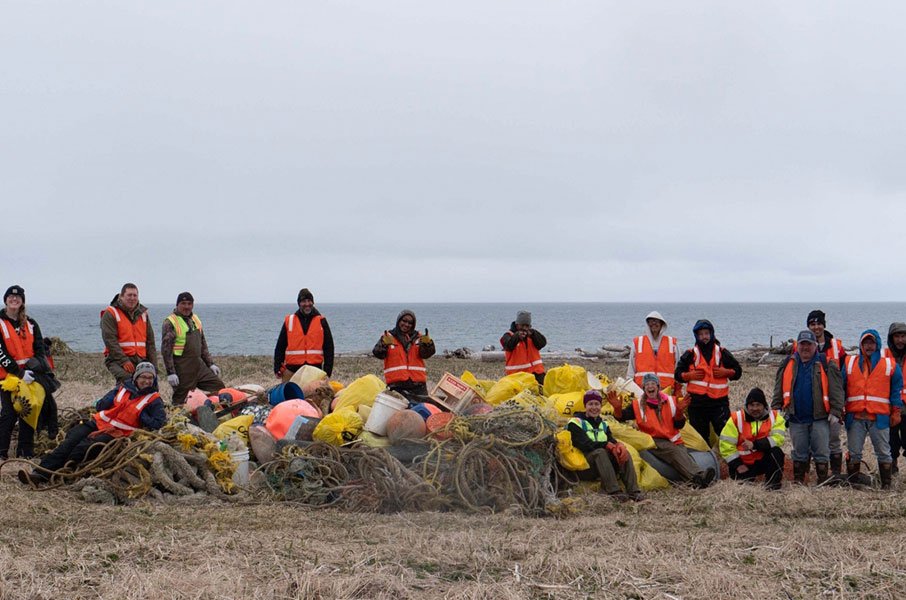
Addressing Marine Debris to Protect the Marine Ecosystem of St. Paul Island
Background:
The Tribal Government of St. Paul Island has been actively addressing marine debris issues for over two decades, aiming to safeguard the marine ecosystem around St. Paul Island. Situated in the eastern Bering Sea, approximately 500 miles east of the Siberian Coast of Russia and 750 miles west of Anchorage, Alaska, St. Paul Island spans 44 square miles. The island's waters are home to globally significant populations of marine mammals and birds, as well as thriving commercial fisheries. The local community, comprised of approximately 400 residents, acts as dedicated environmental stewards, deeply connected to the marine ecosystem.
Challenge:
To combat marine debris and enhance engagement within the local community, the Tribal Government of St. Paul Island, in collaboration with the Alaska marine debris community and the general public, aimed to strengthen partnerships and expand their outreach efforts. They sought innovative approaches to community engagement and prevention strategies to understand the impact of specific types of waste on the environment, wildlife, and the community.
Solution:
With support from the NOAA Marine Debris Program, the Tribal Government of St. Paul Island initiated a community-based social marketing campaign to transform attitudes and behaviors related to the use and disposal of plastic packing bands on St. Paul Island, as well as within the commercial fishing and packaging industries. These bands are commonly used by the local fishing industry to secure and transport goods to the island.
Execution:
The Tribal Government of St. Paul Island executed the project through the following key activities:
Community Focus Groups: The project team conducted five community focus groups to document and understand the sources of packing bands, the usage and disposal practices, and the community's values concerning these issues. This valuable information informed the development of outreach materials to be shared with groups connected to plastic packing band use, such as the fishing industry and cargo shipments.
Deliberative Dialogue Forum: A deliberative dialogue forum was organized, bringing together various stakeholders to discuss solutions for reducing the threat of entanglement for marine wildlife, particularly laaqudan, northern fur seals. The forum aimed to foster collaboration and generate actionable strategies.
Results:
The efforts of the Tribal Government of St. Paul Island yielded significant outcomes:
Awareness and Behavior Change: The community-based social marketing campaign raised awareness and transformed attitudes and behaviors related to the use and disposal of plastic packing bands, contributing to a reduction in marine debris pollution and the threat of entanglement for marine wildlife.
Stakeholder Collaboration: The project fostered collaboration among diverse groups, including the fishing industry and cargo shipments, resulting in collective efforts to address marine debris issues and promote sustainable practices.
Increased Community Engagement: The project successfully engaged the local community, ensuring adequate resources and capacity were available to address marine debris issues on the island's shorelines.
This case study showcases the Tribal Government of St. Paul Island's commitment to marine ecosystem conservation and community involvement. By effectively addressing marine debris challenges through collaboration, education, and behavior change, they empowered the community to protect the precious marine environment surrounding St. Paul Island.
